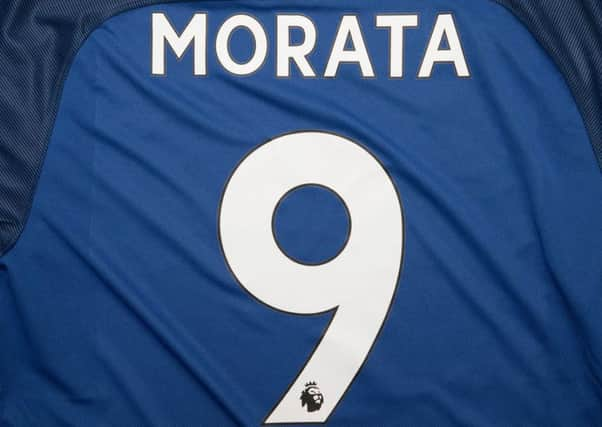The English Premier League is experiencing a textbook case of hyperinflation


This season marks 25 years since the Premier League began and transfer fees have risen exponentially over the past quarter century. But it’s not the fees themselves that are being met with a growing sense of incredulity. Rather, it is the frequency in which vast amounts are being spent on players that are not established stars.
Manchester United’s big summer signing in 1992 was striker Dion Dublin for £1m (the equivalent of nearly £2m in today’s money). This summer has seen the likes of defender Kyle Walker go to Manchester City for £50m and Real Madrid benchwarmer Alvaro Morata go to Chelsea for £58m. Still, the extravagance of England’s top clubs, although shocking, should not come as much of a surprise. Nor should we expect it to last forever.
‘Demand-pull inflation’
Advertisement
Hide AdAdvertisement
Hide AdIt has been widely reported that the football industry is experiencing an acute form of hyper-inflation. Specifically, we are seeing a classic case of what economists call “demand-pull inflation”. This is when there is an increase in the supply of money (demand) while the supply of goods stays constant or depreciates. This is precisely what is happening in English football – the increase in available transfer funds has not been matched by a growth in the number of world-class players and prices have rocketed.
An alternative example of this is when Mugabe’s government in Zimbabwe started printing its own currency to fund war efforts and pay its debts. A loaf of bread would ultimately cost 10m Zimbabwean dollars. Although it would be disingenuous to compare the football industry to Mugabe’s regime (or Kyle Walker to a loaf of bread), the end result in these two situations is not too dissimilar – highly inflated prices.
Price inflation has become more severe in recent years, but it is not new in football. Total spending by Premier League clubs has increased by approximately £1 billionsince the 2006-07 season and has grown continuously since 2011-12. When, then, can this relentless trend be expected to stop?
In short: it will stop when the money supply dries up. The hyperinflation of the football transfer market is a direct result of the landmark £5.1 billion broadcasting deal struck with Sky and BT Sports. Since coming into effect in 2016, the deal delivers unprecedented levels of income to English Premier League clubs. The deal will cease in 2019 and that is likely to be when spending falls – or at least stabilises.
There may be trouble ahead
Advertisement
Hide AdAdvertisement
Hide AdFinancial analysis experts Vysyble recently highlighted concerns over the economic performance of Sky, the chief financier of the Premier League. It reported that despite a £6.1 billion growth in revenue since 2012, losses have risen by £945m in the same period. The broadcasting giant’s economic losses stand at £208m for the past 12 months alone.
Couple this with a 14% drop in viewing figures on Sky’s live channels across the 2016-17 season and this makes for uncomfortable news for Premier League bosses. At this rate, it is inconceivable that Sky will be willing to pay £4.176bn again for the privilege of hosting Premier League matches and a reduction in the money supply seems inevitable. This will mean a curtailment of available transfer funds and the fees payed for players should naturally stagnate.
Until then, Premier League clubs will continue to spend record sums of money for all levels of players because they can – and the market dictates that they must. Meanwhile, clubs on the continent are taking advantage of the supply and demand principle and are refusing to sell for anything less than a king’s ransom. Take, for instance, RB Leipzig playing hardball over Liverpool’s £66m bid for the relatively unknown Naby Keita.
The Premier League, however, is not exclusively an importer’s market. As more players arrive this summer, many others will look to go in the opposite direction. When they do, it is important for English clubs to recoup as much of the money they have spent as possible. The so-called “Premier League premium” English clubs are paying can go both ways – and there is no reason why they should not hold out for similarly huge fees. Leicester City’s rejection of Roma’s initial £30m bid and demand of £50m for midfielder Riyad Mahrez is a good example of how to do this.
Advertisement
Hide AdAdvertisement
Hide AdThe transfer madness may well come to an end in 2019 but we can expect it to get worse before it gets better. The hyper-competitive nature of the football business encourages profligacy and, for as long as clubs have the capacity to spend colossal sums, they will. The first £100m transfer by an English club should certainly not be far away.
This article originally appeared in The Conversation